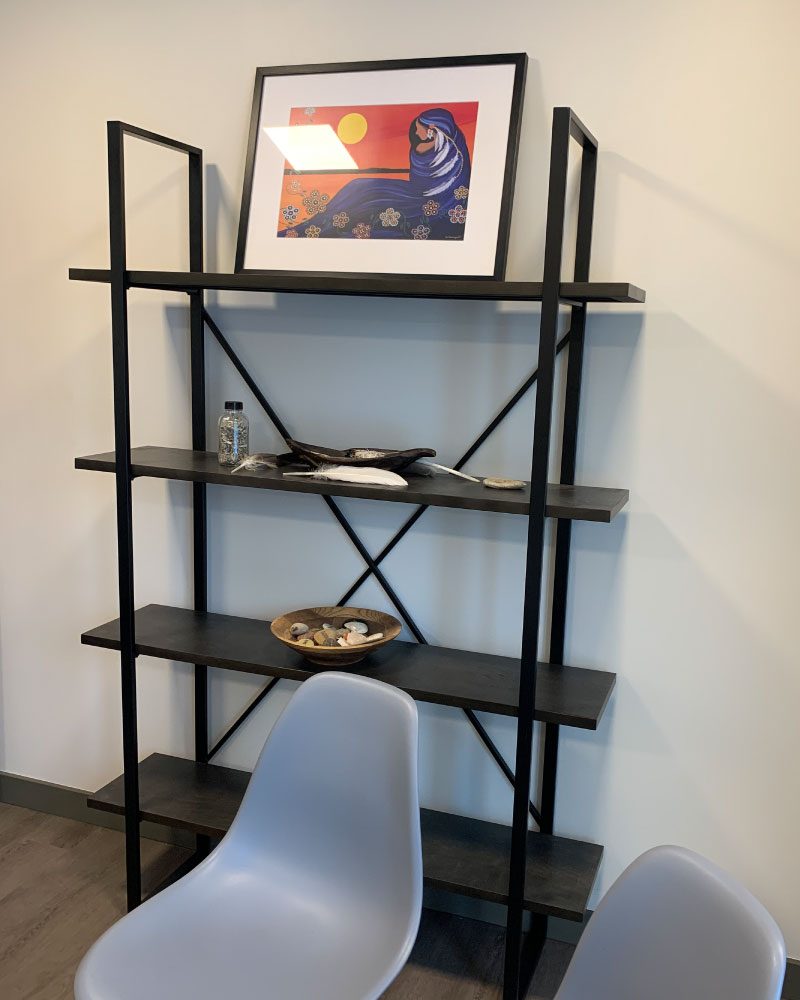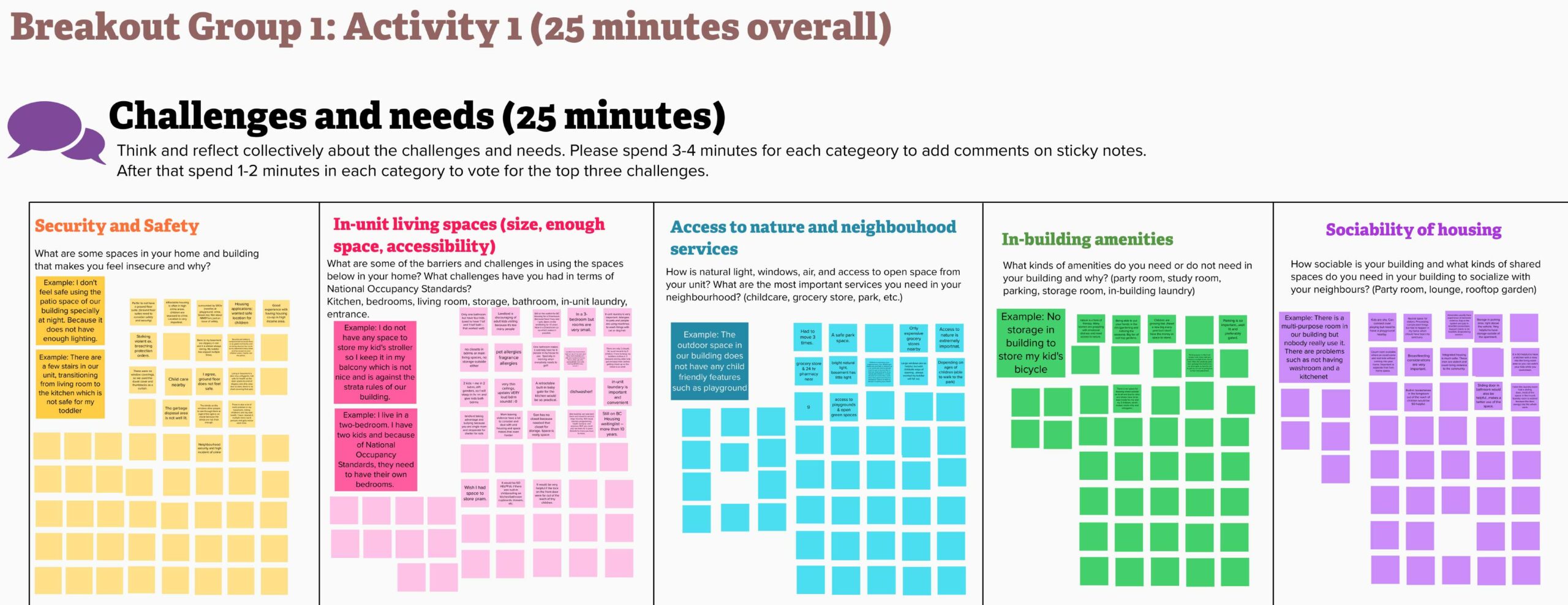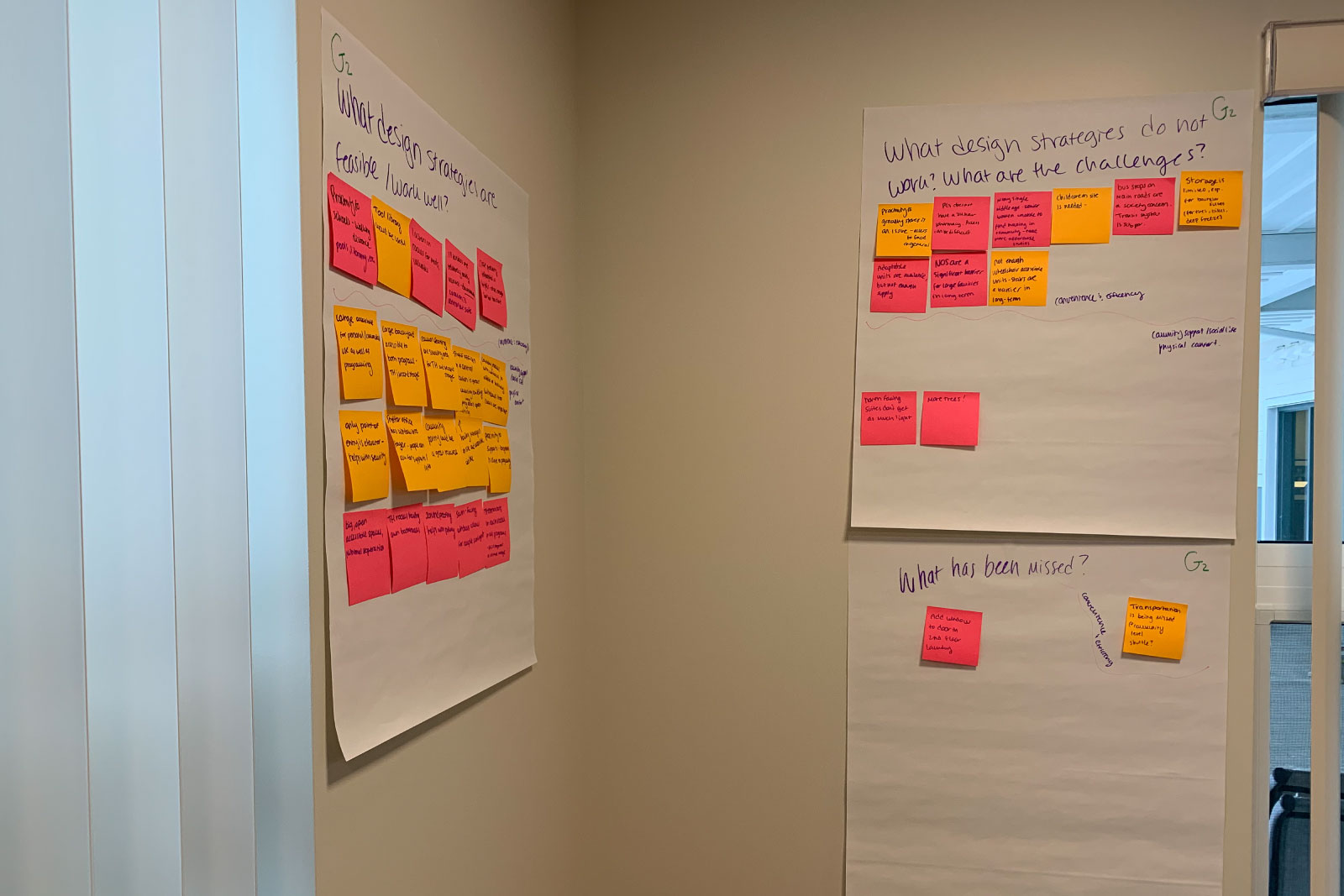Introduction
With Gratitude we recognize that the BC Society of Transition Houses’ office is located on unceded Coast Salish territory, shared by the Skwxwú7mesh (Squamish), xʷməθkwəy̓əm (Musqueam) and səlílw̓ ətaʔɬ/ Selilwitulh (Tsleil-Waututh) Nations.
As this work discusses the lack of safe, affordable and appropriate housing after violence, experienced by women throughout British Columbia, we recognize that this discussion includes all First Nations throughout the province. We understand that the displacement of Indigenous peoples from their lands and other ongoing effects of colonialism are foundational to the disproportionate number of Indigenous women and girls experiencing homelessness and violence. We recognize the importance of valuing the connection between all living things and all systems we have created. As such, we understand that the issues of homelessness and violence can only be fully addressed through sustainable systemic change.
Writing and Editing
Ghazaleh Akbarnejad
BCSTH Women-Centred Design Project Coordinator
Louise Godard
Member Support Consultant
Amy FitzGerald
BCSTH Executive Director
This project would not have been possible without participation and contribution of women who shared their valuable lived experiences and time. We would like to acknowledge also the contributions and commitment of the housing and anti-violence sector experts, the National Occupancy Standards (NOS) Working Group, the Advisory Committee members, and the Rural Community of Practice members who offered their knowledge and expertise of suitable and culturally appropriate housing design.
Special thanks to the project’s pilot sites, Squamish Howe Sound Women’s Centre Society and the Prince George and District Elizabeth Fry Society for their contribution during the consultations and YWCA Metro Vancouver for their site visit tours. Appreciation to the workshop and pilot site sessions’ co-facilitators who supported the co-creation sessions.
Thank you to Tanyss Knowles and Amy FitzGerald who recognized the need for, and necessity of, a women-centred approach to designing suitable long-term housing for women with experiences of violence. Sincere gratitude to the funders for supporting this project. This project was made possible with funding from the Real Estate Foundation of British Columbia, the Catherine Donnelley Foundation and Women’s Shelters Canada.
Many thanks to the Human Studio Architecture and Urban Design Ltd for their architectural and design support, ITS Consulting for their design and tech support, and Sweet Imagery for their graphic design support in developing the Women-Centred Housing Design Toolkit. Images used in this Toolkit are provided by Ghazaleh Akbarnejad (BCSTH), Zahra Asghari (Human Studio), and YWCA Metro Vancouver.
The annotated floor plans and annotated images have been prepared with architectural and design support of the Human Studio Architecture and Urban Design Ltd. The photos of units and common areas are from the YWCA Metro Vancouver housing sites, including the YWCA Cause We Care and the YWCA Pacific Spirit Terrace housing projects as well as the Prince George and District Elizabeth Fry housing projects including My Sister’s Place housing site.



About the BC Society of Transition Houses: Increasing Access to Housing
The BC Society of Transition Houses (BCSTH) is a member-based, provincial umbrella organization that, through leadership, support and collaboration, enhances the continuum of services and strategies to respond to, prevent and end violence against women, children and youth. BCSTH provides support to Transition Houses, Second Stage Houses, Third Stage Houses, Safe Homes and PEACE (formerly Children Who Witness Abuse) and Violence is Preventable (VIP) programs in British Columbia through training, advocacy, research and resources.
In 2018, BCSTH began the Getting Home Project to understand the relationship between housing insecurity and women’s experiences of violence. BCSTH member organizations identified a bottleneck to long-term housing for the women who access their services, which results in limited access to Safe Homes, Transition Houses, and Second and Third Stage Housing for women seeking these services. The Getting Home Project also identified the safety risks resulting from the lack of safe, affordable and appropriate housing for women who have experienced violence, as it was found that women often have to choose between housing and safety.
BCSTH has become a leader in the province for research related to barriers to housing for women experiencing violence and the intersection between the anti-violence sector and the housing sector. It is BCSTH’s goal to increase access to housing by:
- supporting BCSTH members who are providing housing to women with experiences of violence and their children;
- increasing capacity within the anti-violence sector to provide affordable and women-centered housing options;
- continuing research on key barriers to housing for women who have experienced violence and potential solutions;
- researching design solutions to provide women-centered long-term housing;
- knowledge translation through delivering trainings and developing and sharing toolkits and resources with the anti-violence and housing sectors; and
- facilitating partnerships and projects between the anti-violence sector and the community housing sector.
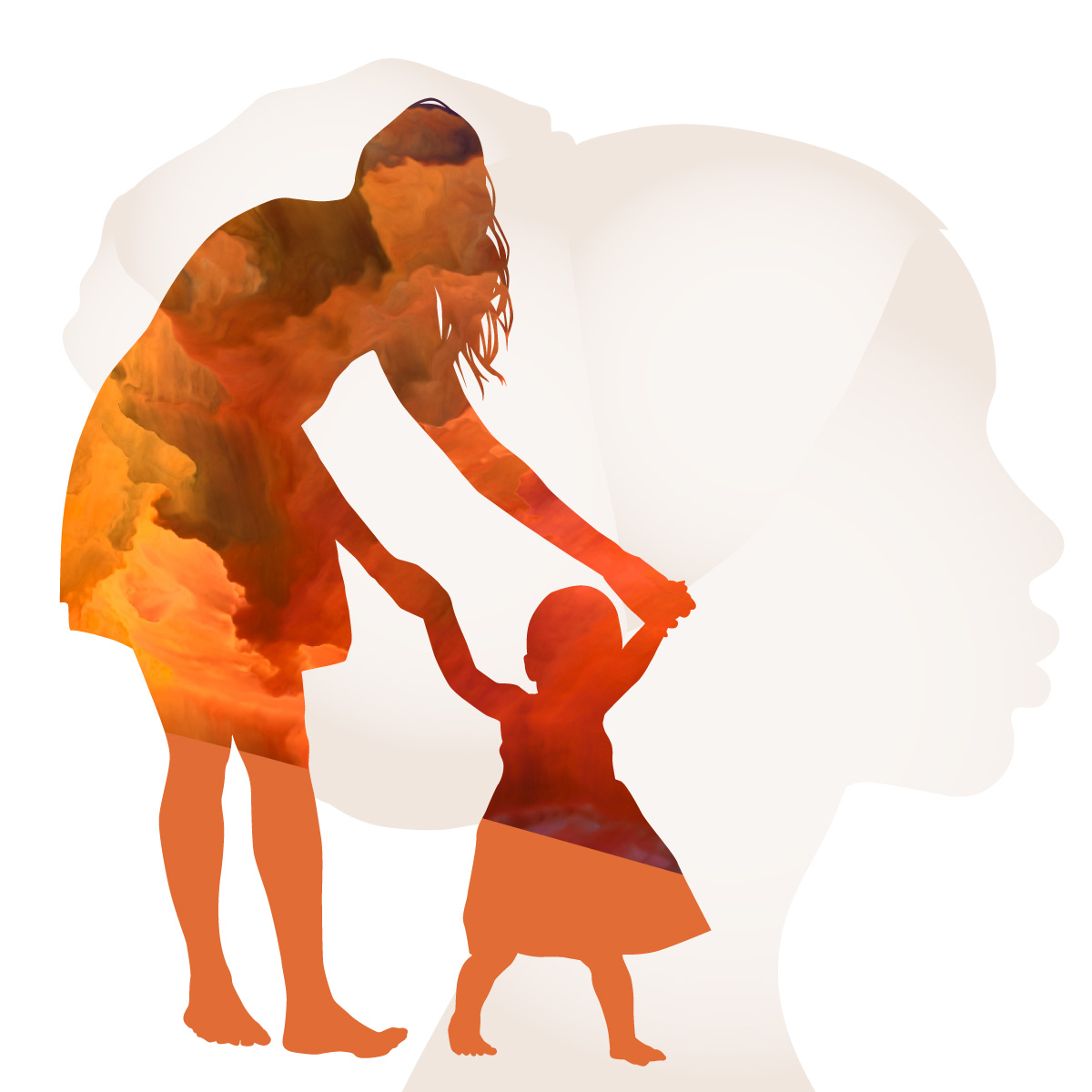
To learn more about BCSTH’s past and ongoing research and projects related to increasing access to housing, please visit the BCSTH Housing Project page.
Glossary of Terms
Accessibility
Accessibility refers to the manner in which housing is designed, constructed or modified (e.g., renovation, modification), to enable independent living for persons with diverse abilities. Accessibility is achieved through design, but also by adding features that make a home more accessible (e.g., modified cabinetry, furniture) to improve the overall ability to function in a home (CMHC, 2022).
Adequate Housing
Housing is adequate if it is not in need of major repairs (e.g., defective plumbing or electrical wiring, or structural repairs to walls, floors, or ceilings) (CMHC, 2019b).
Affordable Housing
Housing is considered to be affordable when housing costs less than 30% of before-tax household income (CMHC, 2019b).
Aging In Place
The ability to remain in one’s home safely, independently and comfortably, regardless of age, income or ability level throughout one’s changing lifetime (CMHC, 2018).
Appropriate Housing
It is stable, safe, and affordable housing that meets different spatial needs of households (i.e., based on their material, psychological and cultural needs), and has easy access to services and resources (CMHC, 2019b; United Nations Human Rights Office of the High Commissioner, n.d.).
Bike Share
Bike share is a service that makes public bicycles available for shared use to individuals on a short-term basis. The bikes can be unlocked from one station and returned to any station in the system, making bike share ideal for short, one-way trips (Vancouver Bike Share, n.d.).
BCSTH Member Programs and Services
BCSTH Member Programs & Services include Transition, Second and Third Stage Houses, Safe Homes, PEACE and Violence is Preventable programs across BC.
Co-creation
Co-creation is a broad term and referred to any act of collective creativity (i.e., shared by two or more people) (Sanders & Stappers, 2008).
Core Housing Need
Core Housing Need is a measurement created by the Canada Mortgage and Housing Corporation (CMHC) to assess how well housing needs are met. It uses the 3 indicators of affordability, adequacy, and suitability. If a housing does not meet one of these 3 criteria and the household can’t afford alternative housing in the local market, the household is considered in core housing need (CMHC, 2019b).
Emergency Shelter
Immediate, short-stay housing for people who are homeless or at risk of becoming homeless (BC Housing, n.d.-a).
Experience of Violence
There are many terms used within violence prevention services in relation to women who have experienced violence. “Women who experience/have experienced/fleeing violence” are used throughout this toolkit to capture all forms of violence inclusive of, but not limited to, Intimate Partner Violence (IPV), Gender-Based Violence (GBV), sexual violence, and domestic violence (Ashlie et al., 2022).
Flexible and Adaptable Space
According to Steven Groák (1992), flexibility in a space is achieved by modifying the physical arrangements and form of the building to make it suitable and appropriate for the needs of occupants. Adaptability refers to using a space in a variety of ways for different social uses without making extreme physical changes (Schneider & Till, 2005). In the context of this toolkit we do not differentiate these two concepts. We utilize them interchangeably and as the ability to modify a space for suitability and appropriateness for different uses with minimum need to technical resources and structural changes.
Heat Treatment Room
Heat treatment is a way of bed bug removal and decontaminating against pests by heating the space/items in a certain heat level (about 120 degrees Fahrenheit) for about 20 minutes which does not harm the belongings. The heat treatment room is a space with a heating unit and a staging area that can be allocated in a building with high risk of bed bug contamination (e.g., emergency shelter).
Homelessness
Homelessness describes the situation of an individual, family or community without stable, safe, permanent, appropriate housing, or the immediate prospect, means and ability of acquiring it (Gaetz et al., 2012). This study suggests that this term should not only be used to refer to chronic homelessness but has to incorporate the hidden aspect of homelessness experiences (e.g., living in temporary housing/programs, coach surfing).
Housing Continuum
It is a concept used to describe the broad range of housing options and services available to help a range of households in different tenures (CMHC, 2022). The housing continuum is fluid, as individuals enter and exit services at any point and it is not a linear step-by-step process to securing long-term housing (Ashlie et al., 2022).
Indicative Design
Graphics, images, and floor plans with levels of details and annotations which visually show suggestions for design principles, strategies, and actions discussed in this toolkit. These design representations aim to provide inspirations to the audience of the toolkit. Toolkit audience are expected to customize and alter these examples and decide what design best fits their specific context.
Integrated Housing
It is referred to housing that offers housing to a wide group of individuals and families (e.g., different income, ability) and is not exclusive of a certain population.
Long-term Housing
Long-term housing refers to permanent and stable housing including within community housing and private market housing. Community housing refers to community-based housing that is owned and operated by non-profit housing societies, housing co-operatives or public (social) housing owned by provincial, territorial or municipal governments (CMHC, 2018). Co-operative housing is a housing model that residents own and operate the housing through a membership system (BC Housing, n.d.-a). “Long-term housing” term is used in this toolkit to distinguish between the other short-term programs that women access after leaving violence.
Multiplex
Multiplexes are buildings which include three or more units. Multiplexes are a way of delivering smaller scale ground-oriented housing on single lots in lower density areas (City of Vancouver, n.d.).
National Occupancy Standards
National Occupancy Standards (NOS) were developed by Canada Mortgage and Housing Corporation (CMHC) through consultations with provincial housing agencies in the 1980s. They are used by CMHC to measure housing suitability and crowding. NOS stipulate that family size and composition should determine the number of bedrooms required by the household. According to NOS, there shall be no more than 2 or less than 1 person per bedroom; Spouses and couples share a bedroom; Parents do not share a bedroom with children; Dependents aged 18 or more do not share a bedroom; Dependents aged 5 or more of the opposite sex do not share a bedroom (BC Housing, n.d.-b; CMHC, 2019b).
Natural Surveillance
Natural surveillance means maximizing visibility by designing areas with sufficient opportunities for people to observe the space and activities around them. Natural Surveillance is one of the strategies in “Crime Prevention Through Environmental Design” approach to improve safety and reduce and eliminate criminal behaviour.
PEACE
The Prevention, Education, Advocacy, Counselling and Empowerment (PEACE) program provide free, confidential individual and group counselling for children and youth aged 3 to 18 experiencing violence, (formerly Children Who Witness Abuse) across BC.
Remote or Isolated Community
Remote or isolated is defined as a community or geographic location with a population of less than 5,000 and/or at least 100 km from a city of>29,000, or a community or geographic location without year-round road access. The project recognizes that geographic isolation can become compounded by lack of access to social networks, internet and cellphone service, and financial resources.
Safe Homes
Safe Homes are community-based networks of private homes that shelter women and their children. They typically offer short stay placements, but can be longer if needed. Safe Homes provide outreach services in small rural communities that are often far from larger towns.
Second Stage Houses
Second Stage Houses provide service-enhanced affordable temporary housing for women, children and youth who have recently experienced violence. They offer women, children and youth secure, affordable housing for 3 to 12 months, as well as support and programming while women and families make decisions about their future. Second Stage Houses deliver varying levels of support, but not generally staffed 24 hours a day or 7 days a week.
Smudging
It is a ceremony performed by many different First Nations peoples, which involves the burning of one or more of the Sacred Medicines collected from the Earth (e.g., Sage, Cedar). Smudging is done to purify the space and to ensure thoughts and words that are spoken come from a good place (McMaster University, 2022).
Suitable Housing
A household is living in a suitable home when there are enough bedrooms for the size and make-up of households according to the National Occupancy Standards (CMHC, 2019b).
Third Stage Houses
Third Stage Houses provide supportive housing for women who have left violent relationships and who no longer need crisis service support. They offer independent housing with lengths of tenancy from 2 to 4 years and deliver varying levels of support, but are not staffed 24 hours a day or 7 days a week.
Transition Houses
Transition Houses provide short- to long-term shelter and related support services to women, children, and youth who have experienced or are at risk of violence. They offer temporary safe shelter and support to enable women to make decisions about their future. They Increase women’s awareness of violence against women. They are staffed 24 hours a day, 7 days a week.
Tuck Shop
A small retailer or store that sells foods and snacks and is located in close proximity or within an apartment complex, schools and other facilities.
VIP
Violence Is Preventable (VIP) is a free, confidential, school-based violence prevention program for students in grades K-12. VIP Presentations, delivered by PEACE counsellors, increase awareness of the effects that domestic violence has on students while connecting those experiencing violence to PEACE Program counselling.
Wayfinding
Wayfinding is knowing where you are physically in a space, and how to get to where you want to go in a safe and independent manner. Use of colour, texture, lighting, signage, landmark, and designing well-ordered spaces and clear sightlines are some of the design strategies to help people to orient themselves and navigate where they want to go (CMHC, 2018).
Women
The term “women” refers to and is inclusive of all self-identified women. BCSTH recognizes that while gender-based violence has significant impacts on cis-gender women and girls in Canada, 2SLGBTQQIA+ and gender diverse people are disproportionately impacted by experiences of violence.
What is the problem and why is a women-centred housing design toolkit necessary?
Violence is the leading cause of homelessness and housing precarity for women in Canada (Schwan et al., 2021). Research shows that young women, Indigenous women, gender diverse and 2SLGBTQQIA+ people, women with disabilities, women living in rural, remote, and Northern communities, women of colour and newcomer women to Canada are disproportionately affected by gender-based violence (Women and Gender Equality Canada, 2022). The BC Society of Transition Houses (BCSTH) Getting Home project shows that affordability, discrimination, and poverty are only a few of the barriers to accessing stable long-term housing for women and their children/dependents with experiences of violence. Another important barrier is the severe lack of appropriate and accessible long-term housing and services which causes women to stay longer in the temporary and transition programs (i.e., Emergency Shelters, Safe Homes, Transition Houses, Second and Third Stage Housing) or return to their abusive partners (Ashlie et al., 2021). Figure 1 shows the continuum of housing and programs that are available to a woman after violence and where long-term housing stands within this continuum.
Figure 1: Continuum of housing for women leaving violence.
Census data supports the finding regarding the lack of appropriate housing for women and their children. The 2021 census data shows that 41% of renter female lone parent-led households in BC live in Core Housing Need. It means that their housing is not affordable, or adequate (i.e., in need of major repairs), or is not suitable (i.e., does not meet the requirements of National Occupancy Standards) and these households can’t afford alternative housing in the local market. 2021 census data also shows that 25% of renter female lone parent-led households in BC live in unsuitable situations. These numbers are expected to be even higher for women and children with experiences of violence.
Lack of appropriate, suitable, and affordable long-term family housing options for women and their children/dependents after violence heightens the necessity of exploring the impacts of gender and violence on women’s housing experiences, their priorities, and finding tangible solutions to address these issues. Currently, the National Occupancy Standards (NOS) defines the suitability of housing for families, including a woman and her children/dependents, merely as having the appropriate number of bedrooms. Strict adherence of the NOS limits women’s choices to access affordable and safe housing which heightens the housing vulnerabilities that they are already subject to. To learn more about the negative consequences of the NOS on women and their children leaving violence, please see the article The Housing Tell: No Room for National Occupancy Standards by the BCSTH and University of British Columbia housing researchers.
While there is a need for reducing barriers and improving housing policies and programs (e.g., flexible NOS policies), the Women-Centred Housing Design (WCD) project discusses that housing experiences and outcomes can be also positively impacted by improving housing quality and suitability and meeting women and children’s spatial needs. More suitable and appropriate housing needs to be designed and built according to the specific needs of women, including empowering them to decide and define what suitability means to them.
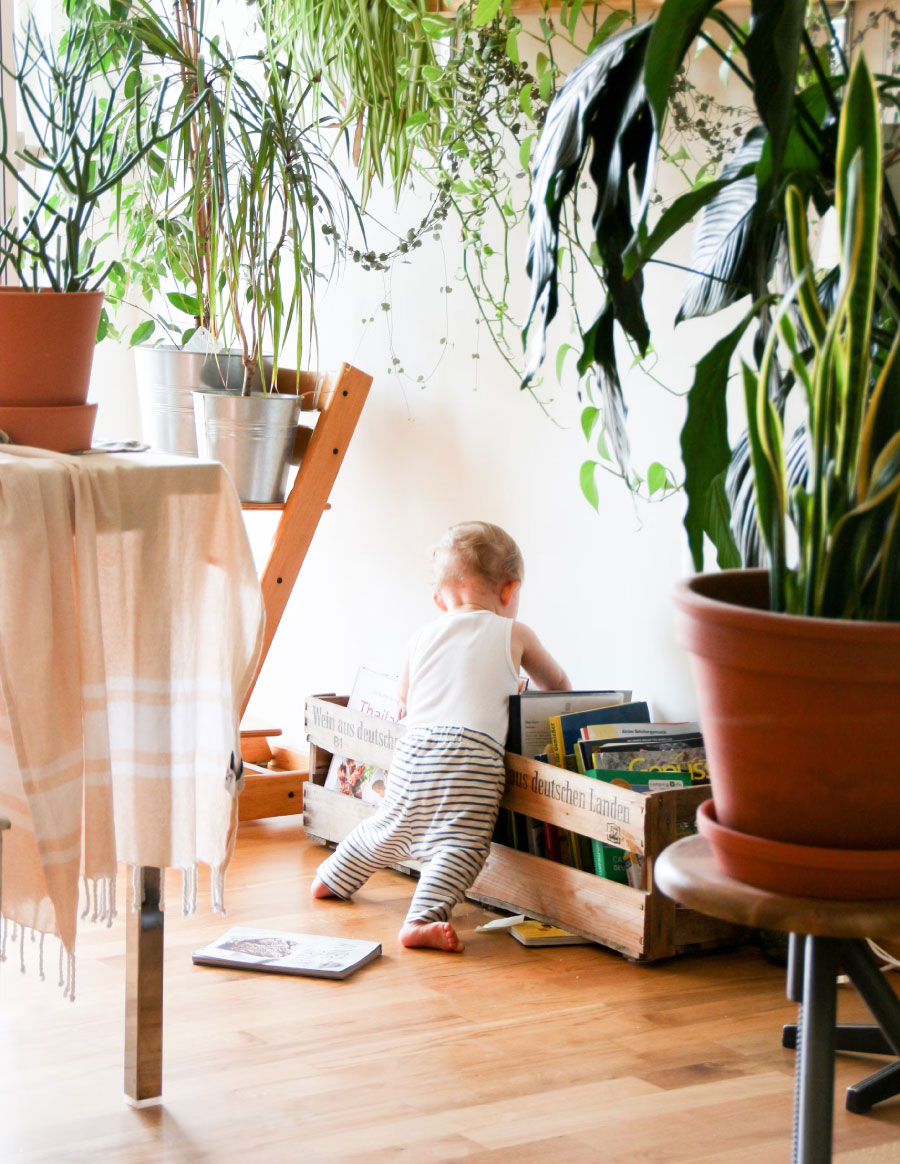
As the anti-violence sector is expanding their mandate to provide long-term housing for women and their children after violence (e.g., through the Women’s Transition Housing Fund Program), there is an opportunity for supporting these new developments with intentional women-centred design guidelines. Consultations during the development of the WCD Toolkit revealed that BCSTH members often do not have the financial or human resources, nor the time necessary, to carry out thorough consultation activities to guide the design and development of suitable and appropriate long-term housing for their community. Also, many architecture and development teams do not have experience designing gender-sensitive, and violence- and trauma-informed housing for women and their children with experiences of violence. Anti-violence housing providers indicated that an accessible WCD Toolkit would support their critical housing design and development work. Therefore, this toolkit offers guidelines for the housing and anti-violence sector to explore opportunities for designing new housing, design improvements in their existing housing and retrofitting through a women-centred design lens.
The WCD Toolkit aims to inform the design of appropriate and accessible long-term housing with a focus on intersectional gender-sensitive and violence- and trauma-informed design. This toolkit seeks to improve the development of housing with efficient, safe, and accessible features. Although one size does not fit all, this toolkit provides design strategies and elements that can be adjusted for better relevancy to the housing needs of women and their children/dependents after violence. Moreover, spaces that are designed and built through an empathic, caring, equitable, and violence- and trauma-informed process are more likely to be successful in meeting the needs of all occupants and not only women and children with experiences of violence.
Process of Developing the Women-Centred Design Toolkit
The process of developing the WCD Toolkit involved 3 main steps (Figure 2).

Figure 2: Creation Process
Discovery and Creation
The first step of developing this toolkit was to engage women with lived experiences of gender-based violence as well as housing experts in an online setting to help create a set of design ideas and actions. To inform this engagement, we consulted with BCSTH’s housing projects’ advisory committees and working groups. We facilitated a co-creation workshop with 14 women with lived experience and another workshop with 14 experts in housing development and operations, architecture and design, and BCSTH Member Programs. Figure 3 shows one of the activities of the online workshop with women with lived experience using Mural boards.
Lack of space, need for efficient design, security and safety, amenity space preferences, access to neighbourhood services and housing location were some of the main topics that were discussed. The result of this engagement process has turned into an Interim Report available on the BCSTH website.
Figure 3: Mural board example, used in the online workshop with women with lived experience
These results were then complemented by a review of the literature and best practices in Canada and elsewhere. These resources focus on trauma-informed design guidelines, intersectional and gender-sensitive design guidelines, and those that highlight the housing needs of women and children with experiences of violence and homelessness (please see Recommended Design Guideline Resources and References sections for a list of resources). Resources also include other BCSTH housing projects (e.g., Keys to Home Gaps Analysis) reports, articles, and design guidelines and toolkits.
Piloting
Once the first iteration of toolkit design recommendations was drafted, it was presented and tested with BCSTH members and experts who are involved in design, development, and operation of housing for women with experiences of violence. The purpose of this step was to refine the first draft of the design recommendations and to understand the extent to which the strategies and design ideas are relevant and applicable in both rural and urban communities. The goal of this step was to also understand what was missing in the recommended design principles and strategies from the perspective of various stakeholders.
Two consultation sessions and conversations regarding the first draft of WCD Toolkit were facilitated with 2 BCSTH Member Programs who have developed, or are in the process of developing Second Stage and long-term housing. Consultations on the WCD Toolkit were facilitated with Howe Sound Women’s Centre Society (HSWC) in Squamish (rural site) and Elizabeth Fry Society (EFry) of Prince George and District (urban site). Figure 4 shows the group activity in consultation with the Prince George and District Elizabeth Fry.
Figure 4: Consultation session with Elizabeth Fry Society in Prince George
Howe Sound Women’s Centre Society (HSWC)
Howe Sound Women’s Centre Society (HSWC) provides a variety of programs and services (e.g., crisis support, sexual assault response, safe housing options) for individuals with shared experiences of gender marginalization including cis and trans women, Two Spirit, trans and/or non-binary people, children and youth impacted by violence in the Sea to Sky Corridor including the communities of Pemberton, Whistler, Squamish and the Skwxwú7mesh, Lilwat7úl, and Lower Stl’atl’imx Nations. HSWC’s short-term housing options and programs include Transitional Housing, Safe Homes, Homeless Prevention Programs, and Short-Term Affordable Housing/Second Stage Housing.
11 people participated in the consultation with the Squamish HSWC, bringing their planning, development, and construction perspectives as well as their experiences of working in the anti-violence sector (e.g., Transition House Support Worker).
Prince George and District Elizabeth Fry Society (EFry)
EFry supports women, individuals and families with safe housing options. Some of the EFry’s housing developments for women with/without children fleeing violence and unsafe situations in Prince George include Nexus Place and My Sister’s Place. Nexus Place is an 11-unit apartment building operating under the Homeless-At-Risk Program through BC Housing.
My Sister’s Place is a community with 3 different levels of housing and supports in proximity to each other. My Sister’s Place consists of an 18 bed Transition House – Amber House, a Second Stage Housing (studio, 2- and 3-bedroom units) and 21 townhomes of long-term housing (1-, 2-, and 3-bedroom units) using a women-led tenancy lens. Figure 5 shows Amber House building and Figure 6 is My Sister’s Place townhomes which are located in close proximity to each other.
In the consultation session with the Prince George and District EFry, 6 participants provided feedback and recommendations on the toolkit. Site visits of EFry’s current housing developments were also conducted to learn what characteristics of women-centred housing design are being applied in their buildings. In this toolkit we present annotated images of My Sister’s Place site.
Lastly, through a Rural Community of Practice that brings together 12 remote and rural BCSTH members, housing and design challenges and opportunities specific to rural and remote communities are discussed and members act in an advisory capacity to inform the development of the WCD Toolkit.
The learning from these steps were applied to the first draft of toolkit.
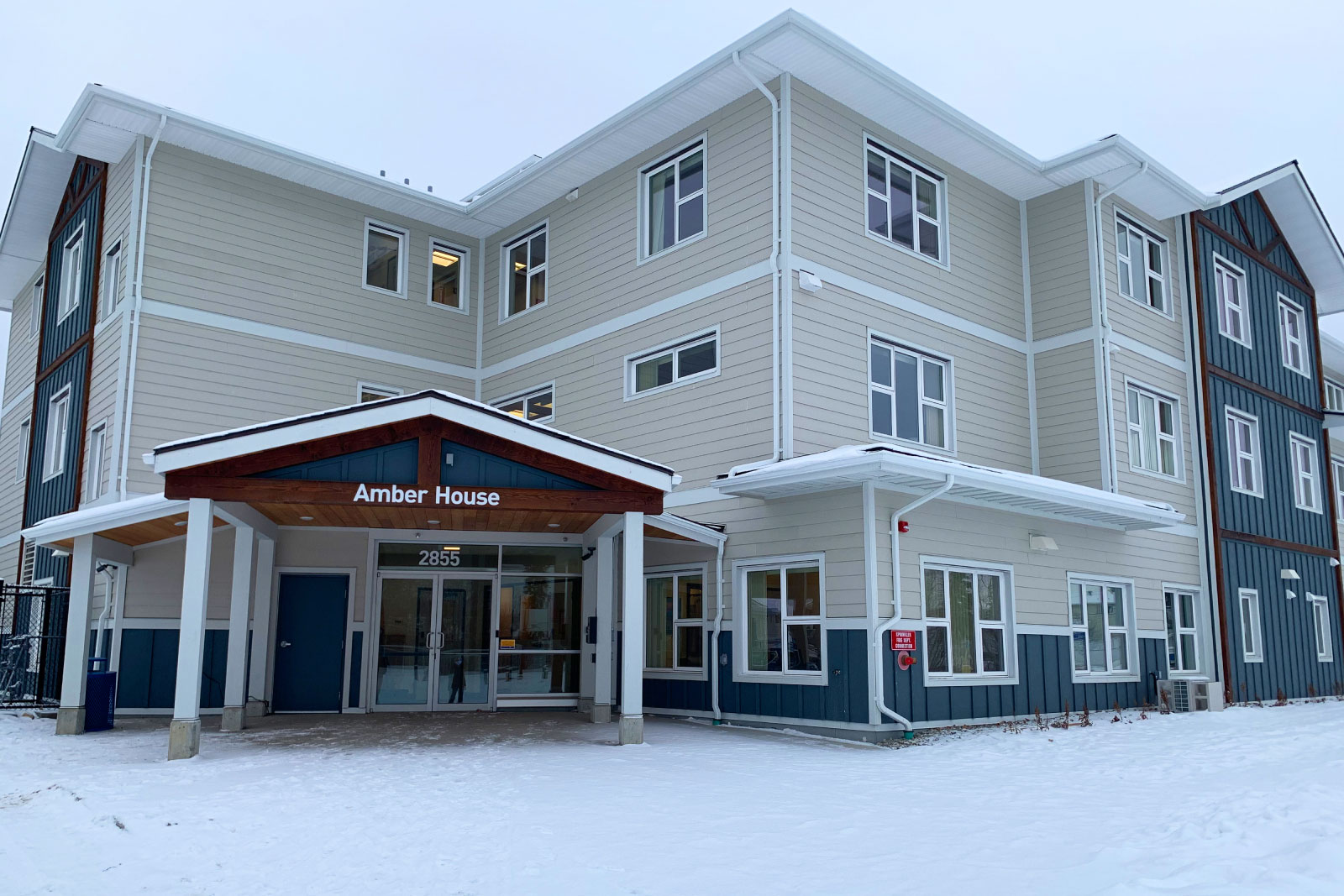
Figure 5: Elizabeth Fry’s Amber House Building, My Sister’s Place, Prince George

Figure 6: Elizabeth Fry’s Townhouses in My Sister’s Place, Prince George
Presentation and Communication
The WCD Toolkit includes design recommendations in the form of principles, strategies, and actions as well indicative design, annotated floor plans and images for the use of the housing and anti-violence sectors as well as developers and designers. One of the main goals of the toolkit is to communicate the design ideas simply to a wide range of housing and anti-violence stakeholders (i.e., not only architects and designers). Indicative design and floor plans which visualize the recommended strategies and actions are presented in this toolkit. These visuals are supported by images of some of the existing long-term and Second Stage housing for women and children with experiences of violence provided by some of the BCSTH’s members including the YWCA Metro Vancouver (YWCA), and the Elizabeth Fry Society of Prince George and District (EFry). These building images are aimed at showcasing some of the existing women-centred and culturally-appropriate housing projects and design strategies. Having access to visual representation of the women-centred housing came up in the pilot site consultations as a valuable asset in the design toolkit.
YWCA Metro Vancouver
YWCA Metro Vancouver is a registered charity, gender equity advocate, community service provider and social enterprise operator. They deliver affordable housing, early learning and child care, training and employment services, and other programs to achieve women’s equality, including the full realization of equality for Two-Spirit and gender diverse people. YWCA housing communities provide safe and affordable homes for single women and their dependent children. In this Toolkit we present images of the Cause We Care House and the Pacific Spirit Terrace sites in Vancouver.
YWCA Cause We Care House is located above the Strathcona VPL library in Vancouver and provides 21 rent geared to income units (2-, 3- and 4-bedroom) to single mothers with dependent children. The building also consists of an outdoor play area for younger children, a BBQ and a small community garden, an amenity room with computer access and a communal kitchen space and a playroom with toys for children, a bike storage, shared laundry room, and a heat treatment room. Figure 7 shows the building’s main façade.
YWCA Pacific Spirit Terrace is located in Vancouver above a fire hall. It provides 16 below-market units (2- and 3-bedroom) and 15 rent geared to income units, to single mothers with dependent children. The building also includes an outdoor play area for younger children, a small communal garden, an amenity room, bike storage, and a shared laundry room. Figure 8 shows the building’s main facade and entrance.
In both housing sites, a Community Development Coordinator is available on site 4 days per week for information and referrals.

Figure 7: YWCA Cause We Care Building, Vancouver
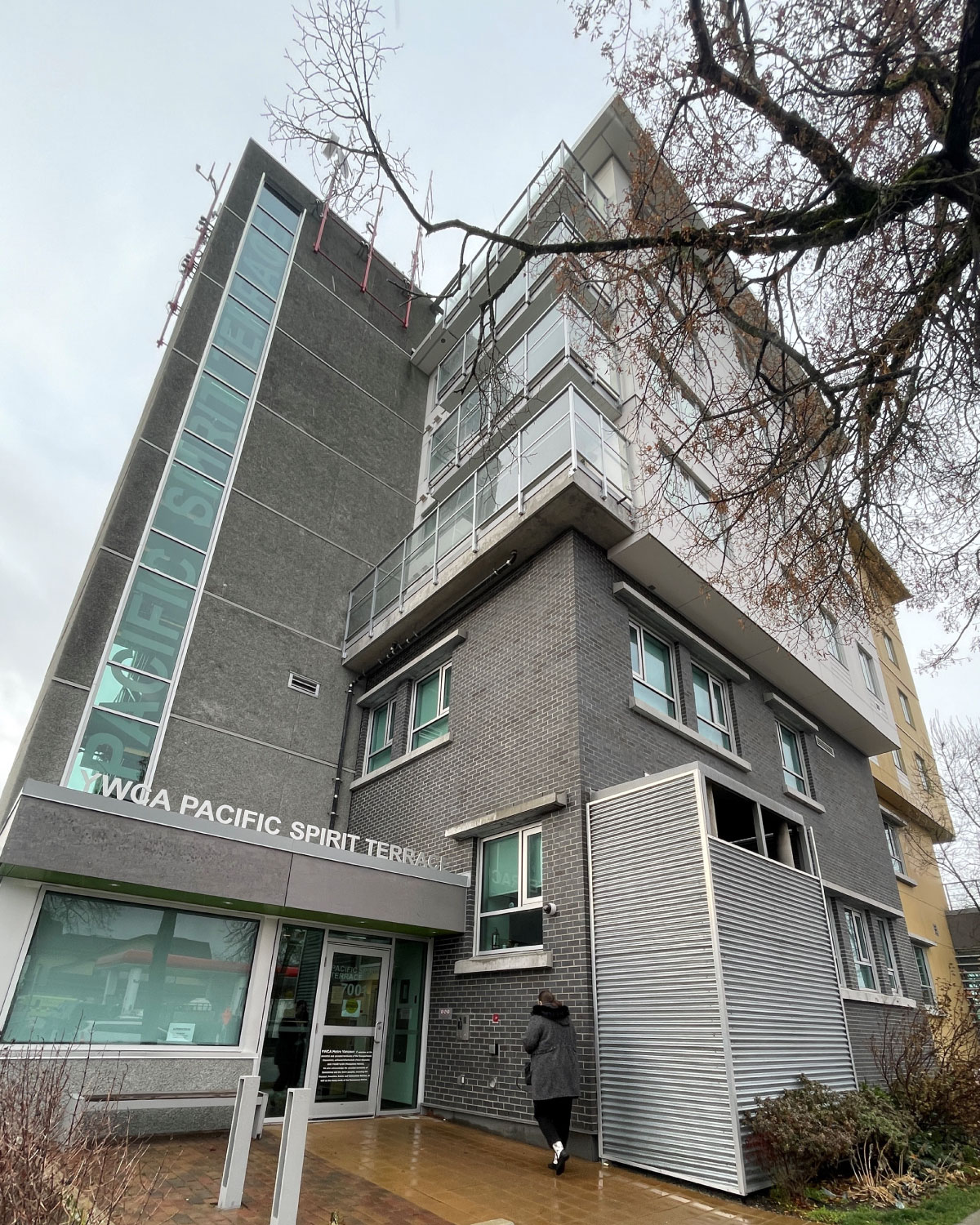
Figure 8: YWCA Pacific Spirit Terrace Building, Vancouver
Who is the key audience of this toolkit?
This project builds design capacity for the anti-violence and housing sector and provides resources to support the design of women-centred long-term housing. The audience of this toolkit are primarily professionals in the anti-violence and housing sectors and those who are involved in and/or interested in providing and operating, developing, and designing long-term housing for women and their children/dependents after leaving violence (e.g., BCSTH members, architects, non-profit housing organizations). This toolkit helps housing providers to engage potential residents, people with lived experience, and other stakeholders (e.g., onsite staff, architecture team) and adapt and customize the design actions and strategies based on the needs of their community and other contextual factors such as culture, environment (climate), budget considerations, and local bylaws and policies.
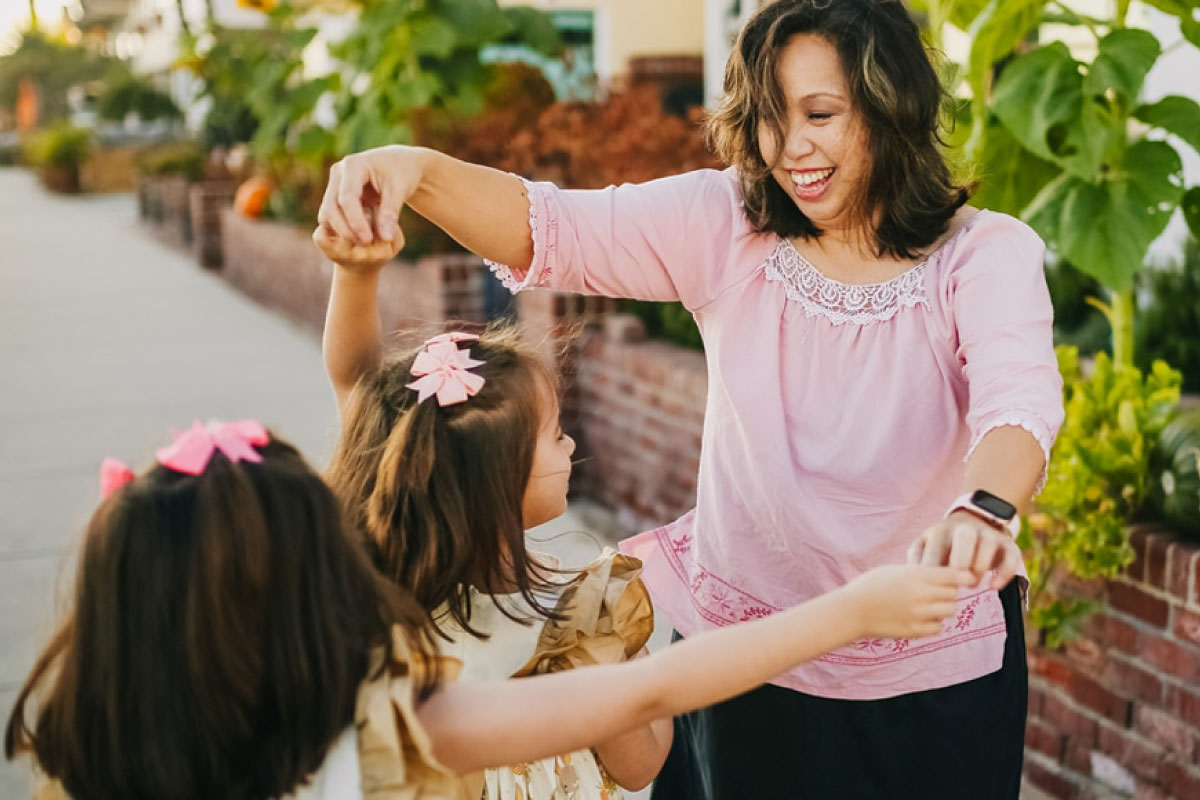
How to use the Women-Centred Design Toolkit?
The WCD Toolkit offers principles, strategies, and actions on designing spaces that are appropriate, suitable, safe, and accessible for women and their children/dependents with experiences of violence. Each principle and its following strategies and actions are recommended in response to the problems and needs identified in terms of long-term housing design for women and their children/dependents (see the Interim Report for the breakdown of identified needs and problems). It is important to note that when possible, these design recommendations should be accompanied by the engagement of existing and/or potential residents to reflect their lived experiences and cultural and environmental contexts and needs. Figure 9 shows the 3 levels of design recommendations offered in this toolkit.

Figure 9: Levels of housing design ideas
Principle
Principles are the high level values and qualities that are important in achieving the goal of women-centred housing design. These principles are the top priority areas identified for achieving intersectional gender-sensitive and trauma- and violence-informed long-term housing design for women and children with experiences of violence. They will be achieved through applying the design strategies and actions.
Strategy
Strategies are high level recommendations and plans to achieve the principles of women-centred housing. Each strategy will be met through applying a set of actions.
Action
Actions are practical and tangible design ideas and details and are illustrated in this toolkit, using graphics and visuals (e.g., floor plans, space diagrams).
Each principle and their following strategies and actions are colour coded for navigation purposes. Please see Foundations and Principles to learn more. In Principles, the list of all the design strategies and actions related to each principle are presented and in the Design in Action section, the annotated floor plans and images provide visual representation of many of these design ideas.

